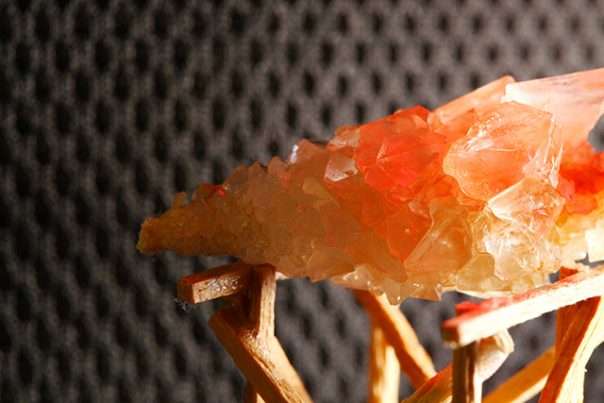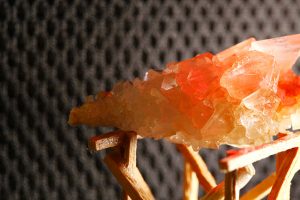
Aluminum potassium sulfate sources, health risks
Saturday, October 07, 2017 by Michelle Simmons
http://www.naturalpedia.com/aluminum-potassium-sulfate-sources-health-risks.html

Aluminum potassium sulfate is an inorganic salt that has several names such as aluminum potassium sulfate dodecahydrate, potash alum, potassium alum, and kalinite. This chemical compound occurs in the form of the dodecahydrate, which means that each molecule of the compound is linked with twelve molecules of water.
Aluminum potassium sulfate is an odorless crystal that gradually loses its water when heated. It belongs to the family of compounds known as the alums, which refers to a double salt that consists of aluminum, the sulfate group (SO4), and one other metal. Other compounds that belong to alums include aluminum ammonium sulfate and aluminum sodium sulfate. The alums were discovered in ancient Egypt and China, where they were used as deodorants.
They are effective deodorants because they are astringents, which are substances that cause tissues to become smaller, thus lessening the tendency of sweat glands to produce sweat. The alums were also used to treat wounds and lessen the bleeding of minor cuts and abrasions, nosebleeds, and hemorrhoids. However, it was not until the 19th century that chemists recognized that alum was a variety of compounds of alum.
Aluminum potassium sulfate occurs naturally in the form of the minerals alunite and kalinite. The chemical compound can be mined and purified to acquire potash alum, where the minerals are available. On the other hand, if the minerals are not available, the chemical compound can be produced synthetically by mixing together aqueous aluminum sulfate with aqueous potassium sulfate. These two compounds react with each other in solution to form the aluminum potassium sulfate that can be extracted through allowing the solutions to evaporate and and crystallize.
There are several uses of aluminum potassium sulfate. It can be used as a mordant, or a substance that reacts with a dye to help it attach more permanently to a fiber or fabric. Potash alum is also used in the paper-making industry. It can be used to give paper a tough, shiny surface or to increase the intensity of inks, paints, and dyes used on the paper.
Aluminum potassium sulfate is also used in purifying the systems of some water purification plants. When the compound is added to water, it combines with the impurities in the water and neutralizes them. When neutralized, they form clumps that will settle down at the bottom or rise up and float in the water.
The chemical compound is also used as a food additive to control the acidity of a product, in manufacturing matches, for waterproofing of fabrics, tanning of leather, to add hardness and toughness to cement, and in the production of fireworks.

Harmful effects that can be caused by aluminum potassium sulfate
There are several potential hazardous effects of aluminum potassium sulfate. It can cause irritation in the skin and eyes. It is also harmful when ingested or inhaled. Aside from these, there is not much information about the harmful effects of aluminum potassium sulfate.
Body systems harmed by aluminum potassium sulfate
The body organs that can be harmed by aluminum potassium sulfate are minimal — negative effects to the body are mostly due to contact with the chemical compound. It can be harmful to the skin and cause irritation, particularly on abraded skin.
The chemical’s dust particles that can come in contact with the eyes may cause eye irritation. If inhaled, they may harm the respiratory system as they can irritate the respiratory tract and mucous membranes. If ingested, aluminum potassium sulfate can cause irritation to the gastrointestinal tract, which can cause symptoms such as mild abdominal cramping, nausea, severe vomiting, and hemorrhagic gastroenteritis, depending on the concentration and amount ingested. In addition, ingestion may produce a feeling of dryness and puckering of the mucous membranes of the mouth and throat.
Where to learn more
- Vaccination detoxification – How to remove heavy metals and other vaccine toxins
- Tetanus Naturally
- Are You Being Poisoned On a Daily Basis?
Summary
Aluminum potassium sulfate is a chemical compound that is odorless and crystallized. It is also known as aluminum potassium sulfate dodecahydrate, potash alum, potassium alum, and kalinite. The chemical compound can cause irritations in the skin, eye, mouth, throat, and gastrointestinal tract.
Sources include:
Tagged Under: Tags: aluminum potassium sulfate





